Spray-painted street art has evolved in many ways over the past decade, with the once-underground culture embraced by hip real estate developers, vibe-making local governments and grassroots communities alike. Subject matter varies, but from shiny new developments to small alleyways, one clear trend has emerged: there are a lot of big faces keeping watch over our city.
“I think portraiture and the use of the human subject is one of the most accessible forms of art mainly due to its more literal and identifiable qualities,” street artist James ‘Jimmy C’ Cochran tells The Adelaide Review. “Even if the subject or person in the painting is unknown, people will still find a way to identify with it or familiarise it in some way.”
In Adelaide there’s the ghost of John Lennon eyeballing you above Halifax Street, Academy Award-winner Lupita Nyong’o peering down over Franklin Street, Frank the Barber keeping watch over the real Frank the Barber on Vardon Avenue, and many more unknown subjects.
“My favourite types of paintings of the portrait or human figure are the ones that are less literal and more metaphorical because they allow for broader interpretation. For the more recognisable portraits, they can be a powerful way to pay homage to someone.”
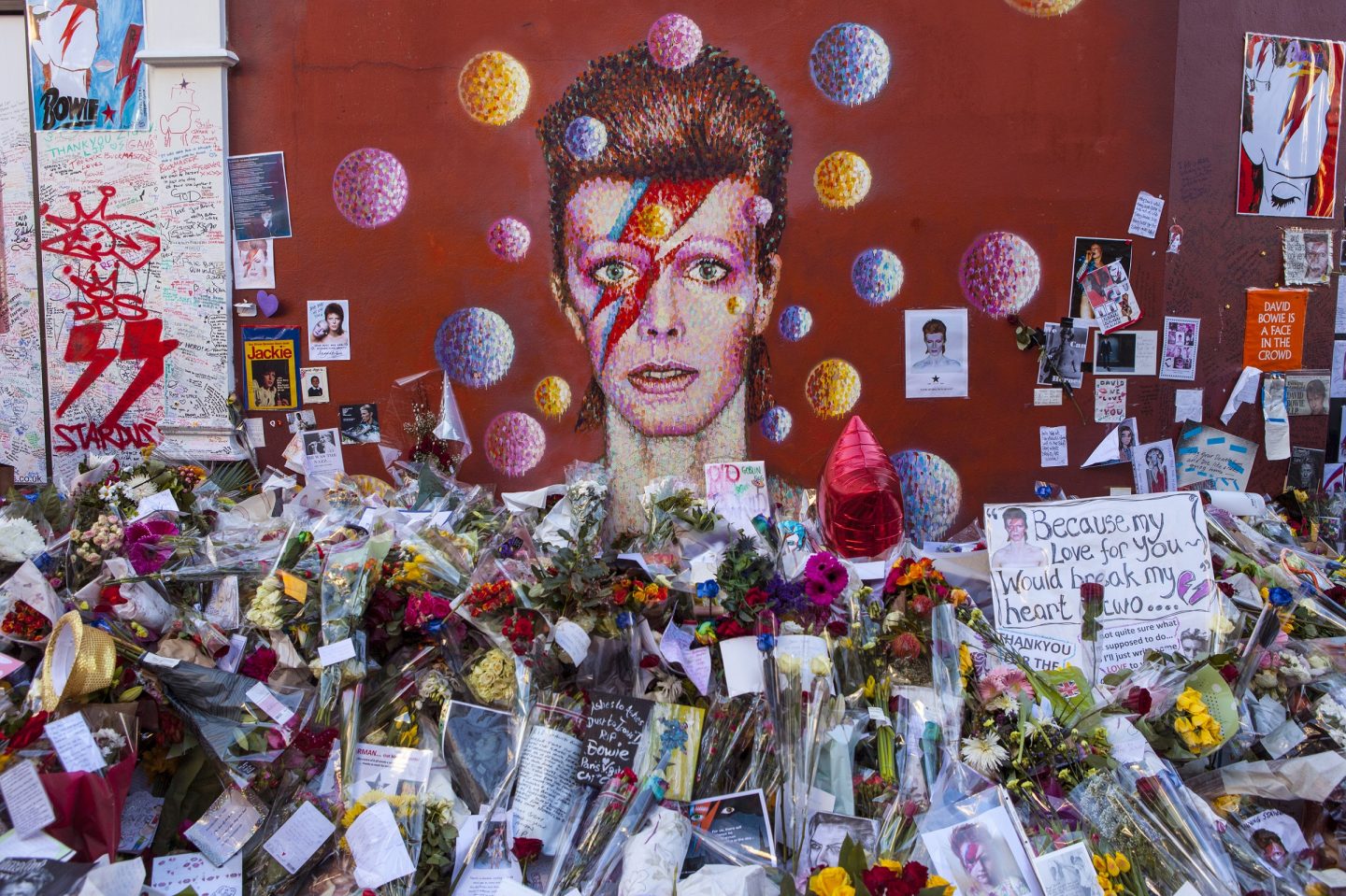 James Cochran’s David Bowie mural in Brixton
James Cochran’s David Bowie mural in Brixton
“They can be a powerful way to pay homage to someone.”
James ‘Jimmy C’ Cochran
Some of Cochran’s best-known works fall into the latter camp, from a Brixton mural of David Bowie that famously became a de facto public memorial after the musician’s death, to a moving tribute to late Kaurna leader Stephen Gadlabarti Goldsmith created with artist Elizabeth Close. In his time painting murals around the world, Cochran has had a front row seat to the changing fortunes of street art over the last 30 years.
“When I was first painting large murals on the street there was still a lot of resistance to the idea of working with the spray can, which was then associated with graffiti and vandalism,” he says. “Nevertheless in that period in the early 90s I was receiving a lot of commissions which were mainly community-based work supported by the local councils who were looking for alternative ways to approach the graffiti problem.
“The perception and methods for painting on the street have evolved rapidly since then and it has been embraced at many levels. In recent years there has been a push to invest art into the up-and coming areas of the city as a way to make that area more vibrant and attractive for the locals and new residents.”
These looming tributes to colour, culture and youthful vibrancy, with the occasional Baby Boomer pop icon, can certainly form an interesting juxtaposition with the changing shape of the city. For many years property development has been seen as an enemy of culture – like inner-city Sydney, Adelaide’s east end has seen how noise complaints of residents drawn to inner-city life can undermine long-running venues that help create a city’s atmosphere.
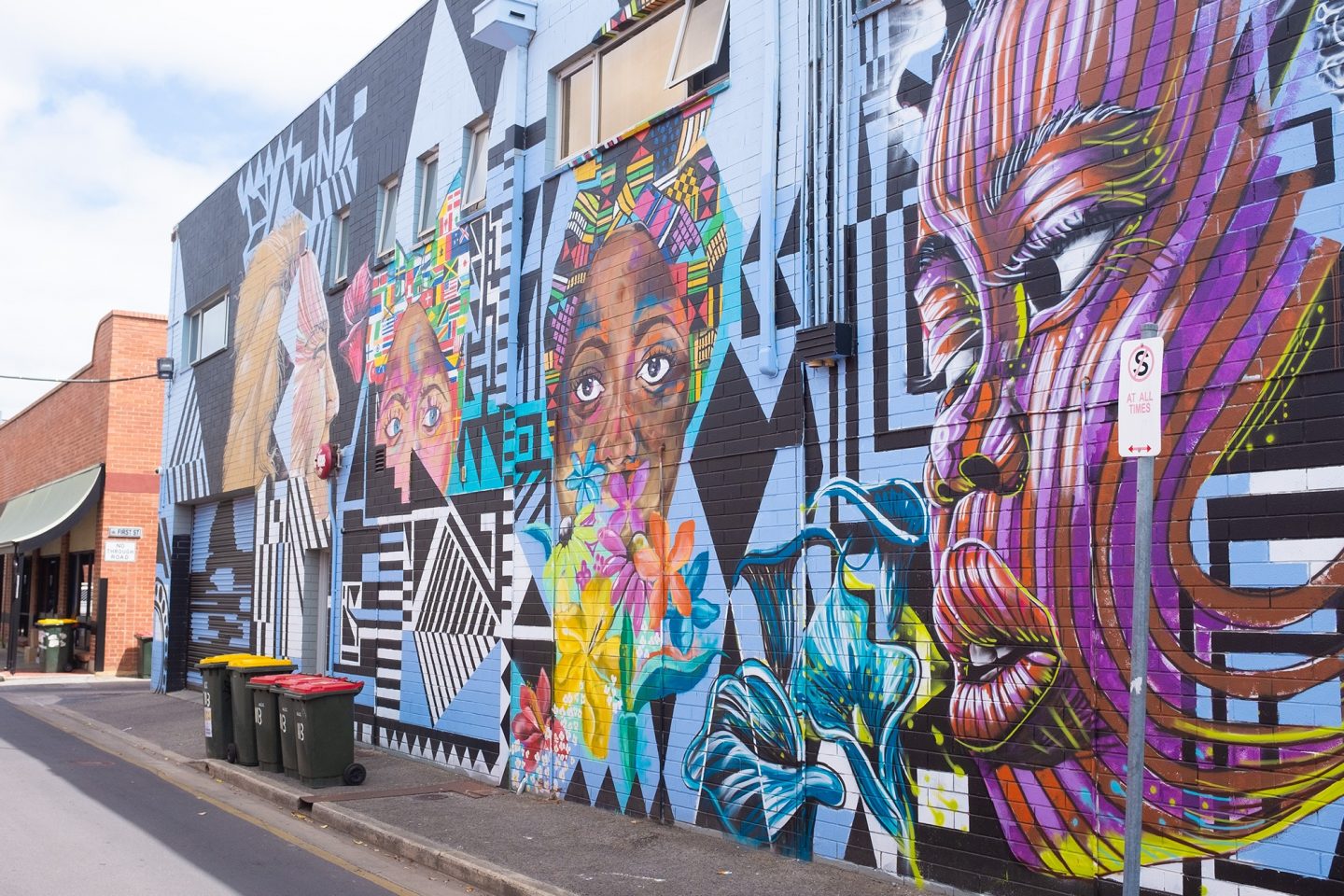 Mwamba Chikwemba, Thufu B, Julia Townsend and Elizabeth Close’s Sanaa Festival mural on Percy Street
Mwamba Chikwemba, Thufu B, Julia Townsend and Elizabeth Close’s Sanaa Festival mural on Percy Street
While these murals are arguably a very surface-level nod to the need for developments to contribute to a city’s culture, they certainly reflect a changing attitude on the part of developers and the residents they attract.
A recent ‘attitudinal’ market research survey of city residents by Hudson Howells reflected on a subset it labelled ‘Cosmopolitans’, comprising 76 per cent of surveyed city residents that favour medium and higher density housing . Of this cohort, an overwhelming majority (78 per cent) were aged 50 or older, with 53 per cent of those surveyed described as “older couples with no children at home”. Although too small a survey to be truly representative, it’s not a great stretch to imagine that these inner-city empty-nesters account for many new residents looking out from sleek white towers emblazoned with youthful images – or the images of their youth.
Of course, the power of the human face has long been a staple of the visual art world, something University of Adelaide art history professor Dr Lisa Mansfield knows only too well: she teaches a course about portraiture.
“I think the centrality of the human face in art across time and place is due to a combination of biological, social, and political factors,” she explains. “Faces are made for looking. The agency of the human face is not only demonstrated in nature in the way magpies in spring swoop and often target human eyes, but also in the cultural phenomenon of art vandals who ‘de-face’ portraits by scratching or damaging representations of the eyes, nostrils, mouth, and even ears.
“The magnetism of the human face is perhaps more obviously evidenced in ideals of beauty from Christopher Marlowe’s reference to Helen of Troy as ‘the face that launch’d a thousand ships’ to popular fashion magazine covers in modernity. Beyond these conventional models of desirable femininity, faces also have the capacity to exert political power for both men and women through an iconic individuality that facilitates the viewer’s instant recognition of distinctive facial characteristics in both portraits and caricatures.”
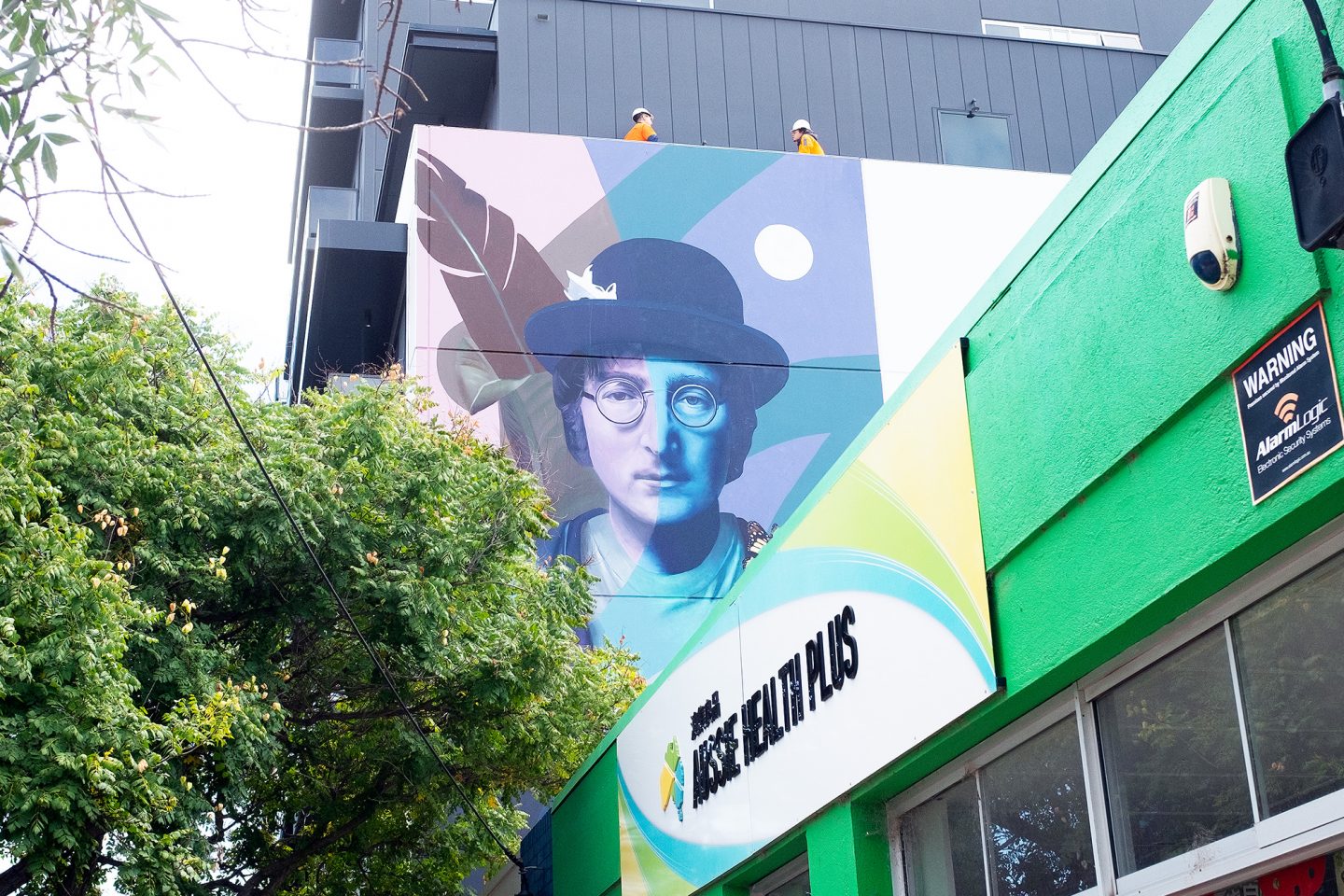 Lisa King’s John Lennon mural on Halifax Street
Lisa King’s John Lennon mural on Halifax Street
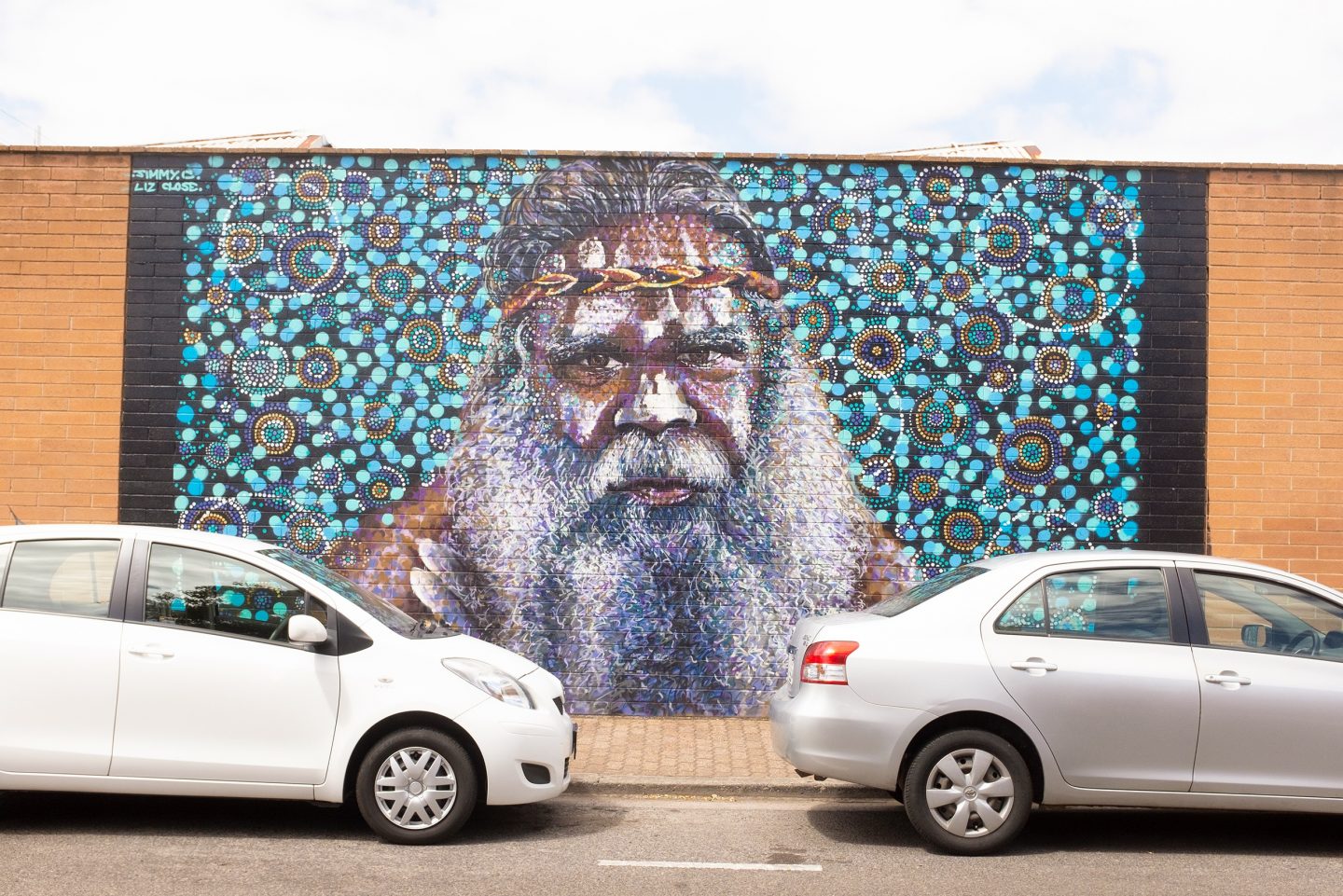 James Cochran and Elizabeth Close’s tribute to Stephen Gadlabarti Goldsmith on Norman Street
James Cochran and Elizabeth Close’s tribute to Stephen Gadlabarti Goldsmith on Norman Street
In an Adelaide context, this goes some way to explain why recognisable celebrities and anonymous faces are equally prevalent. “I think portraiture is a popular subject for public murals in the present for the same reasons portraits were popular in the past,” Mansfield says. “Faces are endlessly fascinating and activate our imaginations, though in this context we’re mostly talking about faces of iconic individuality and subjects with a public platform.
“Lisa King’s mural portrait of David Bowie as Ziggy Stardust on The Maid Hotel is an excellent example of the power of public mural portraits to uplift a space and honour a music legend. The large size of most mural portraits also creates an element of spectacle, but like all portraits, they are imbued with complex layers of artistic, social, and psychological meanings that invite the viewer to make their own interpretations.”
“It was the original intention of the Mexican muralists in the 1930s to bring the art and the message to the people by painting in more public places, but now the approaches to painting on the street have developed in such a way that it is only inevitable that portrait tributes will be a facet of it,” Cochran says. “Perhaps the current interest in celebrity culture has influenced this, although there are still plenty of artists making powerful paintings on the street of lesser known individuals from the community
“Ultimately, portraits are an artful and seductive form of fiction,” Mansfield reflects. “Ones that often represent bigger ideas about individual personalities or cultural standards than what can be seen in the face literally.”
Perhaps then, these murals say less about the city we have, and more about the one we’re trying to project. Adelaide is, literally, putting on a brave face.
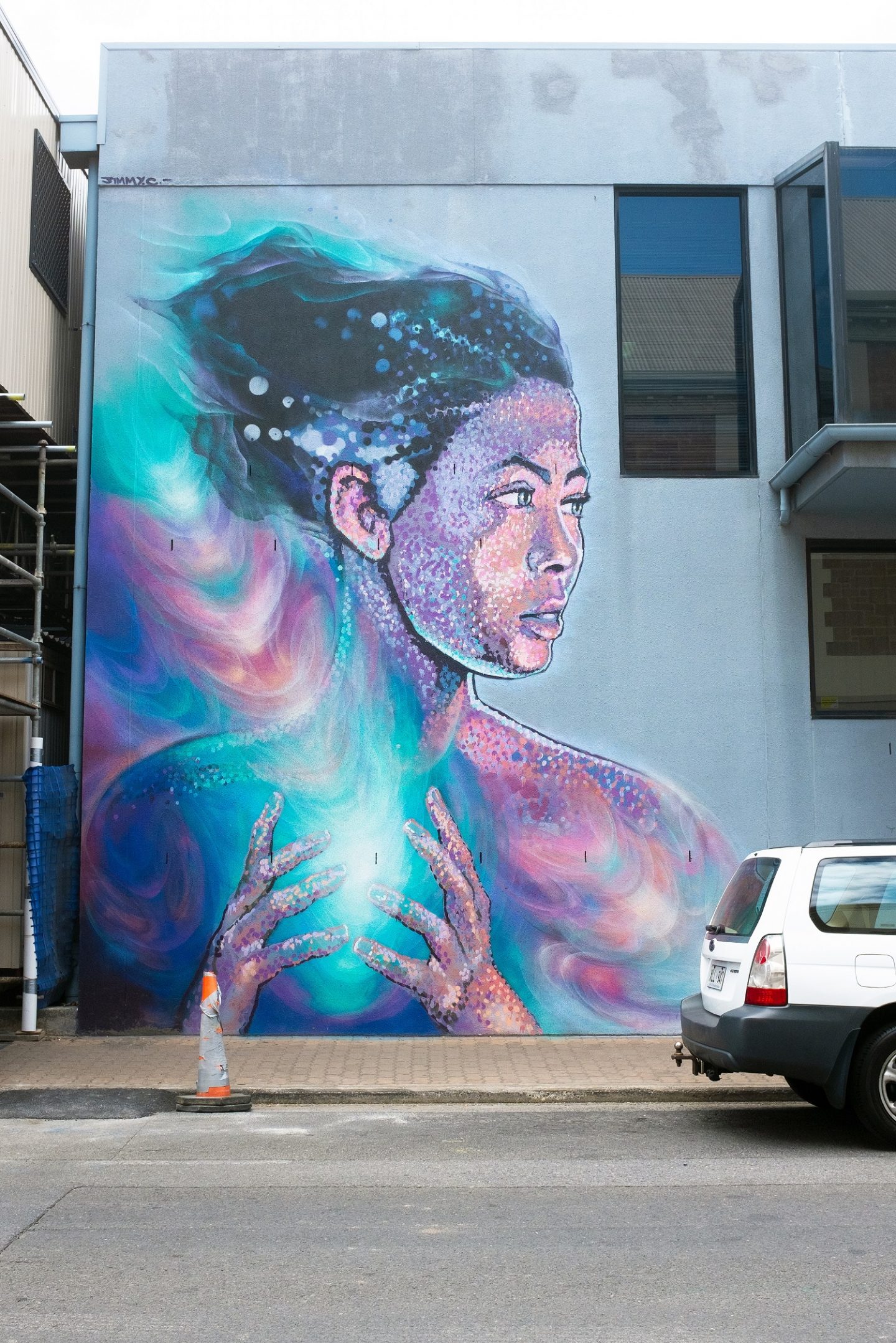 Seb Humphreys and James Cochran’s mural on Market Street
Seb Humphreys and James Cochran’s mural on Market Street
Walter is a writer and editor living on Kaurna Country.
Get the latest from The Adelaide Review in your inbox
Get the latest from The Adelaide Review in your inbox